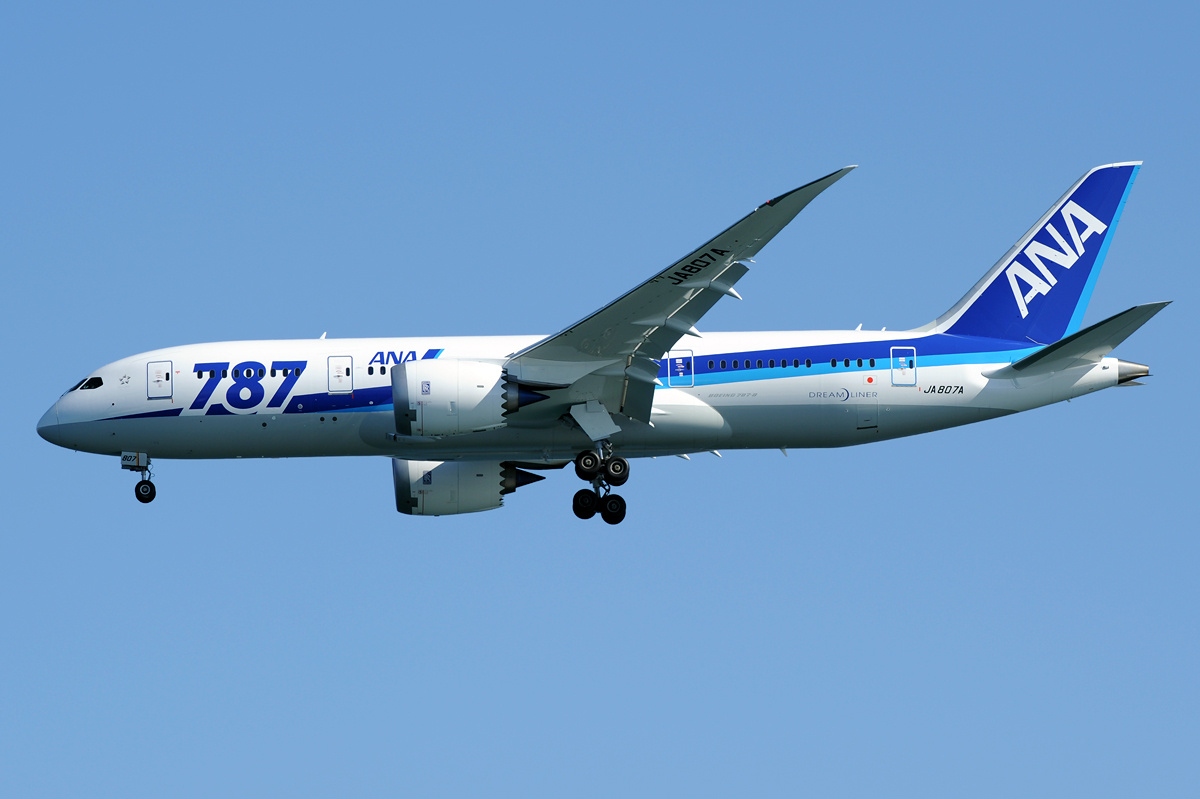ANA flights to celebrate 10 years of Dreamliner service
14 October, 2021
4 min read
By joining our newsletter, you agree to our Privacy Policy


All Nippon Airways (ANA) will celebrate the 10th anniversary of the Boeing 787 Dreamliner entering service with special commemorative flights on October 31.
ANA was the launch customer for the Dreamliner in 2011 after placing its first order in 2004. Today it operates 76 of the aircraft – 36 787-8s, 38 787-9s and two 787-10s.
READ: Boeing MAX deliveries on upward track
“Since its debut in 2011, the Boeing 787 has served with distinction, and is widely known for its innovative improvements to the cabin environment and fuel efficiency,’’ the airline said in a statement.
“Over the past decade, ANA has collaborated with its manufacturing partners to customize the aircraft, introducing new technologies and materials to improve the passenger experience.
“The addition of the aircraft to ANA’s fleet 10 years ago allowed for the significant expansion of the ANA Group's international network and supported the airline’s efforts to reduce carbon emissions while maintaining its high service standards.”
The commemorative flights will be operated by a 787-8 and will fly as ANA 653 between Tokyo’s Haneda airport and Okayama and ANA 679 between Haneda and Hiroshima.
Overall, the technologically advanced 787 family has been a success that has changed the industry.
It helped hasten the end for four-engine aircraft such as the revered Boeing 747 and it allowed more point-to-point flying as the plane’s increased efficiency allowed airlines to open up new routes. It also encouraged ultra-long-haul operations such as London-Perth.
With more than 1000 aircraft delivered, Dreamliners are now a common sight at airports and, according to the Aviation Safety Network, a 787 has never been involved in a fatal accident or a hull loss.
But the past decade has not been without problems.
The Dreamliner replaced the futuristic “Sonic Cruiser” concept after airlines told Boeing they valued fuel efficiency over speed.
Boeing promoted fuel efficiency that was 20 percent better than older aircraft, improved aerodynamics, advanced flight systems and, from a customer perspective, higher cabin pressure and bigger windows.
The US manufacturer also touted new production and supply chain practices introduced to build the new plane but issues resulted in early aircraft sections turning up unfinished at the final assembly line in Seattle. The result was production bottlenecks that continued to plague deliveries even after entry into service but were eventually ironed out.
A significant early operational problem centered on the aircraft’s lithium-ion batteries and thermal runaway events that caused several onboard fires.
This resulted in the full 787 fleet being grounded in 2013, the first such instance since the McDonnell Douglas DC-10 fleet was taken out of service in 1979, while Boeing came up with a fix for the problem.
Other issues included turbine blade corrosion on Rolls-Royce Trent 1000 engines uncovered by ANA in 2016. While not a Boeing issue, this resulted in widespread problems for operators of Rolls-powered planes as aircraft were taken out of service so fixes could be implemented.
More recently, deliveries of 787s were halted in October last year as the company addressed production and quality control issues. Boeing resumed deliveries in March this year before halting them again in May.
And a report in The Wall Street Journal Thursday said another problem had been found with titanium components that were weaker than they should be in 787s manufactured in the last three years.
At the end of September, the plane-maker had delivered just 14 787s this year, none of them in the third quarter. The US Federal Aviation Administration says the manufacturing issues pose no immediate threat to the safety of in-service aircraft.
.
Get the latest news and updates straight to your inbox
No spam, no hassle, no fuss, just airline news direct to you.
By joining our newsletter, you agree to our Privacy Policy
Find us on social media
Comments
No comments yet, be the first to write one.

